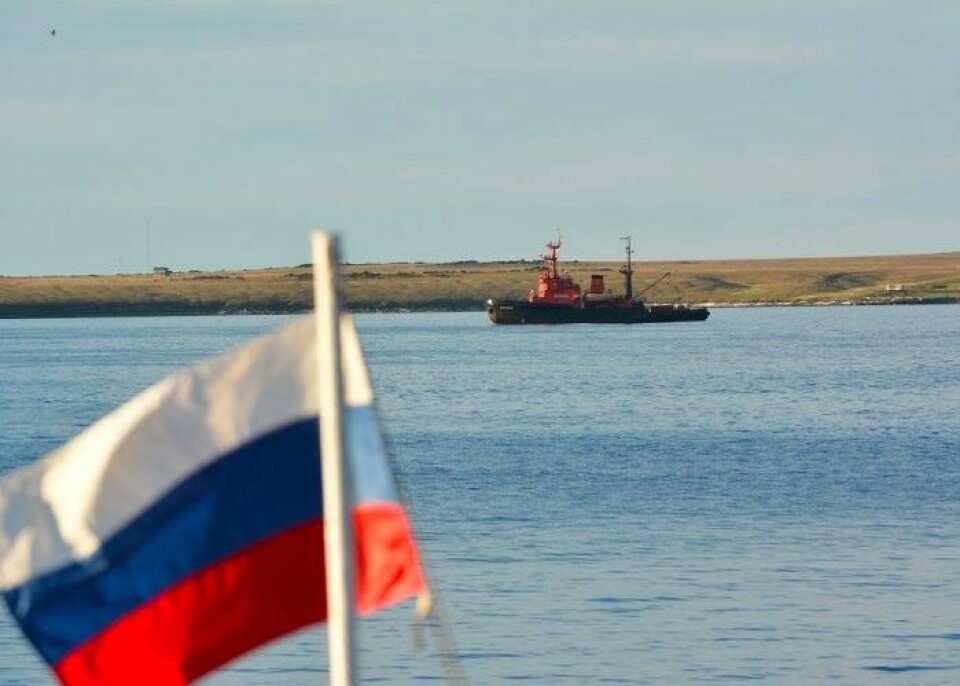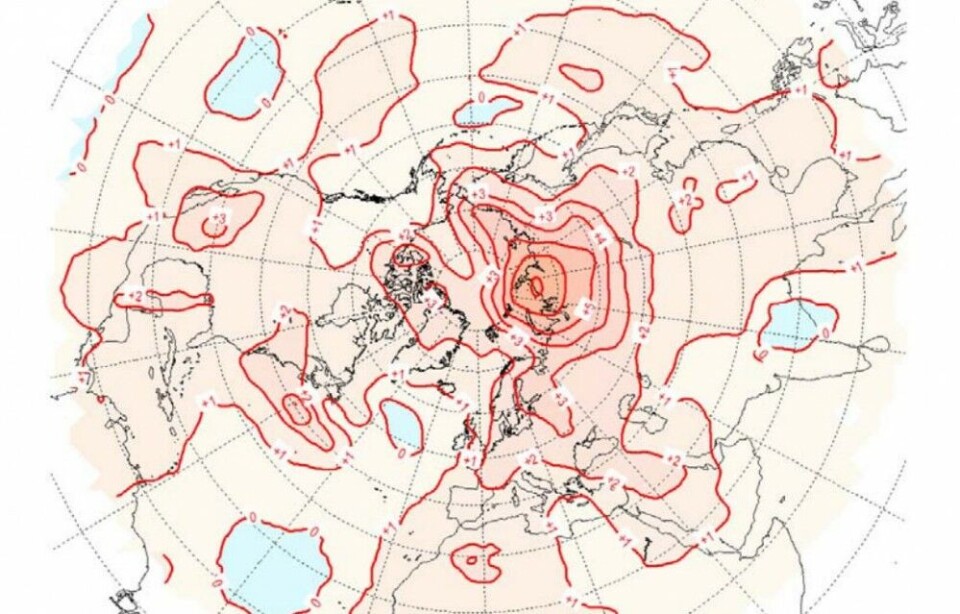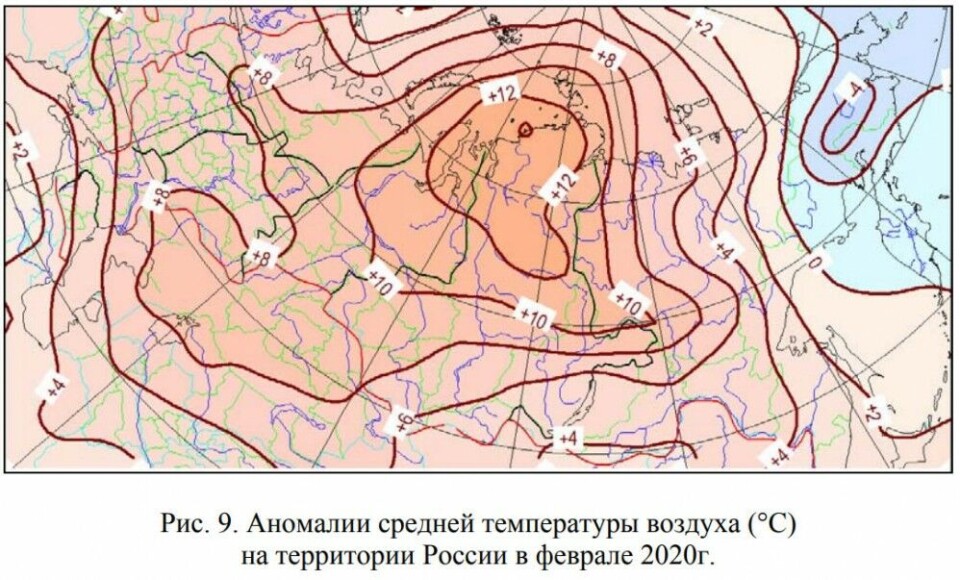
This Russian Arctic coast has planet's quickest warming
Parts of Northern Siberia were up to 7℃ warmer than normal in 2020. Massive melting of sea-ice on the Northern Sea Route now paves the way for a hike in shipping.
It was the second warmest year in the Arctic on record, and parts of the vast region saw air temperatures far beyond the traditional freeze. The year 2020 follows the trend of the past decades and its spring months were the absolutely warmest since measurements started more than 100 years ago, a weather report from Russian meteorological service Roshydromet reads.

Parts of the Russian Arctic are now several degrees warmer than just few years ago. The warming is the most significant along parts of the North Siberian coast, and especially around the peninsulas of Taymyr and Yamal.
Heat maps show that an area on the coast of Taymyr in 2020 had average temperatures up to 7℃ higher than normal. Through major parts of the year, the same region had the biggest temperature deviations in the whole Arctic.
In February, the Taymyr Peninsula was 12℃ warmer than normal, and in October the temperature deviation was up to 10℃.

Senior researcher at the Norwegian Meteorological Institute Ketil Isaksen explains that the extraordinarily high temperatures in the areas around Taymyr is related with the so-called polar vortex, that brought extremely cold air in the stratosphere over the Arctic Ocean.
“This vortex is there every winter, but in 2020 it was more stable over the Arctic than normal,” he told the Barents Observer.
“The cold and stable stratosphere over the Arctic led to major temperature contrasts with more southernly air. This resulted in a significant and strong wind field, a jet stream, in the edge parts of the vortex and the low pressures took a more southern course, which subsequently gave the record-warm conditions in Siberia, and also in Scandinavia and major parts of Europe,” he explains.
According to a new climate report from the Russian meteorological service Roshydromet, no other place in Russia is experiencing a quicker warming than Taymyr and the coast of the East Siberian Sea. In the period 1976-2020, the warming per decade in the area amounts to 1,2℃.
That means that the average temperature in Taymyr today is about 5℃ higher than in the 1970s.
The average global warming per decade is 0,18°С, while Russia as such in the same period has experienced a warming per decade of 0,51°С, the report reads.
According to Ketil Isaksen, it is not clear whether the development of the polar vortex is connected with global warming. It is also not clear how the major ongoing changes in the Arctic will affect the rest of the world, he explains.
“Global warming leads to a warming of the lower parts of the atmosphere and cooling of the higher parts, the stratosphere,” he says. “But it is still not clear if the unusually stable Arctic polar vortex can be connected with global warming.”

Consequences for Arctic environment are dramatic. Sea-ice is melting at an unprecedented pace. According to Roshydromet, the sea-ice on the Northern Sea Route in September 2020 covered an area of only 26,000 square kilometers. That is the lowest level of ice ever measured in the area at that time of year.
Before year 2000, the sea-ice extension along the Northern Sea Route normally amounted to about 1,5 million square kilometers in September. But that has radically changed.
“The quick reduction of sea-ice started in 2001 from an area of 1,4 million square km to only 200,000 square km in 2005. Over the last 15 years the extension of sea-ice in September has ranged between 200-300,000 square km, which is 5-7 times less than in the 1980s,” the report reads.
The year 2020 smashed the former record from 2012, when there was an ice sheet of 37,000 square km in the area.
The quick warming in the region also significantly affects the permafrost that stretches across the circumpolar Arctic.
According to the new climate report from Roshydromet, the melting has been most significant in Western Siberia. In several of the Institute’s regional measuring points, the melting per decade amounts to more than 20 cm, and date indicate a significant change even from 2019 to 2020.
While researchers and environmentalists raise the alarm about developments, leading representatives of shipping companies and industrial developers express positive confidence about the growing perspective for exploitation of the formerly ice-locked region.
Russia is today investing big sums and efforts into the development of the Northern Sea Route to a commercial trade route, and President Putin has made it a national objective to increase annual shipment in the area to 80 million tons.
Russian government representatives have openly expressed delight with the recent blockage of the Suez Canal, and nuclear power company Rosatom in a tweet made fun about the situation in the area. Rosatom has key responsibilities for the development of the NSR.
Also the Russian Ministry of Energy this week said that the traffic jam in Suez illustrates the need for the Northern Sea Route. According to ministry representatives, the Northern Sea Route was in 2020 open for trans-shipments for up to ten months, TASS reports.

















